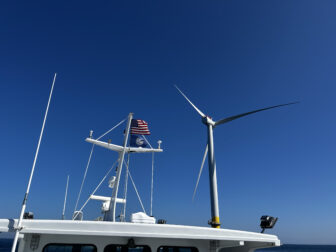Guest post by Gray Michael Parsons
I have been an environmentalist all my life…..it is “in my blood.”
But growing up in the 50s & 60s in Coastal North Carolina, the more popular term was “conservationist”. It was a much safer label than proclaiming one’s traditional obligation to protect Mother Earth as an American “Indian.”
As a child and adolescent, my grasp of concepts such as conservation and ecosystem were deferred in favor of more simple ones such as baseball, football, the Beatles and Temptations. But my maternal grands (who raised me) taught me to revere all life forms and the elements necessary to support life…..Sun, land, water, air, etc. All I had to do was watch. Their walk was their talk.
So it was that same Traditional Indigenous value system that compelled me to travel to the Standing Rock tribal reservation in ND in the late summer and mid Fall of 2016 as a volunteer water protector.
The contemporary significance of Standing Rock (SR) was initially how the Dakota Access Pipeline threatened access to the only clean water source available to the tribe. As Natives, we saw unprecedented tribal unity happening, with the reemergence of treaty rights as a viable pathway to stop or at least divert the pathway of Dakota Access Pipeline (DAPL). SR then became more than a place and a people; it grew into a model of courage, sustainable civil disobedience, and resistance to corporate power at its apex. The movement was prayerful, peaceful and powerful.
And although an unarmed demonstration, it was met with dramatic overkill in terms of numbers and armament with respect to law enforcement. They used multiple helicopters, military Humvees, water cannons, diverse and powerful disabling sprays such as mace and pepper, rubber bullets, tear gas grenades, disabling sound and even displayed a missile launcher! Police violence and brutality in this region brings to mind that in the deep South during the peak Civil Rights movement era.
And yet, the resolve of the people was unmovable. Why? For many reasons, but perhaps paramount among them was the fact that their backs were against the wall. It was and remains a matter of sustaining life and habitability on a sacred land. And as the movement grew, the water protectors became more diverse with respect to all aspects of humanity: age, gender, sexuality, race, religion, culture, country of citizenship, and more.
They were us! Indigen-US! Not just “Indigenous”
Fast forward: The Black Snake known as DAPL is only one of an entire network of pipelines intended to transport fossil fuels extracted via fracking. These pipelines have spread like a for-profit cancer across our land, in everyone’s backyard, including your own. They contain poisonous chemicals that are patented and unavailable to be identified in hospital ERs. The contents are going directly to the seas or major river ports for sale outside our country. It’s about profit, not domestic security.
In West Virginia, Virginia, and North Carolina, a similar pipeline, the Atlantic Coast Pipeline, threatens to desecrate documented historically sacred Native lands……and the water source for many of you in the event of a spill.
Our backs are against the wall. It’s time to act now!
Here’s how: Organize locally and connect statewide and regionally. Call and write your government reps, start and support petitions. Run for local office. Divest from banks that are invested in the Dakota Access Pipeline and other fossil fuel projects. Attend info meetings and refute the distortions and lies of many in the extractive industries. The media is rarely our ally in this battle, so be your own media by writing LTEs, blog posts, and op-eds. Engage everyone you know!
In the Renape dialect of Algonquin and of some of my Coastal NC Ancestors, “Pasa Qwer Wuhn”, We Stand, We Fight. ” Ke-Ke Yu Nupi”, Water Is Life! Join groups such as the Coalition of Woodland Nations or Indigen-US on Facebook. Ke-Na, Nya:weh, Miigweech, thank you.
Gray Michael Parsons
Author’s Bio: Gray Michael Parsons is of Machapunga Tuscarora and Hatterask Native American ancestry and was born and raised in “Little” Washington, NC in 1949. He is the author of “Hope On Hatterask” and drums and dances at native powwows and festivals in the East. He was a Water Protector in opposition to the DAPL near the Standing Rock Sioux Tribe Reservation in early September and late October 2016. He is a graduate of East Carolina University with a degree in Parks, Outdoor Recreation, and Conservation and attended graduate studies at Johns Hopkins, Morgan State and University of Maryland, Baltimore County. He resides in the Baltimore metro area and works in the Organic & Natural Foods industry.
Image at top from Victoria Pickering with a Creative Commons license






